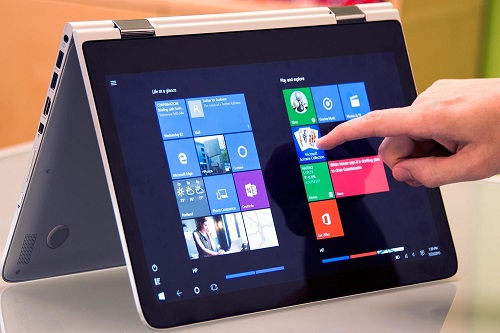Windows 10 Tablet Creates Only Minidump File
A windows minidump file is a tiny file that automatically saves your data whenever the PC shuts down unexpectedly, like, if you notice a BSOD error.
In such cases, the files are automatically saved within the C:\Windows\minidump or C:\Winnt\minidump directory or depending on the Windows version and the file save a Mini031120-02.dmp (here 03 is a month, 11 is a particular day, 20 is a single year, and -02 is the character of the dump file).

Here is how it all works
How Windows 10 create Minidump File
The eMMC means (Embedded Multi-Media Controller.) Additionally, it can also mean a package of the all-flash memory controller and flesh memory integrated on similar silicon die.
It contains three types of components as a Multimedia card (MMC), flash memory control, and flash memory.
Today’s many applications like digital camera tablets and smartphones also save their content in the flash memory.
You cannot find this problem on your device like a tablet or Windows 10 or 8.1 or 8 using SD eMMc memory. If completely memory dump or kernel memory dump are arranged in the advance system settings, tap startup, and recovery.
Every minidump file is saved as %systemroot%\minidump directory instead of to the standard C:\windows\minidump place.
This problem is occurring because of dynamic energy management over the SD eMMc devices. OSs like Windows always generate a minidump file and also ignore the settings of memory dumps that an administrator confirmed.
To across the failure of Windows behavior, or also need a specific Registry framework to confirm the device.
Here are the steps that you need to follow to access the Windows eMMC energy-saving features while a BugCheck is also identified as Stop error and blue screen error.
Before starting the registry operation, we are recommending you keep backup your registry, or you can also prepare a system store point.
Here are the steps to follow:
- Tap Windows + R key to open Run administration.
- Enter the control system in the dialog box and then hit tap Enter to start Advance System settings.
- Hit Startup and Recovery. Ensure that Write debugging information is set to the Complete memory dump or Kernel memory dump.
- Now do you command to start Registry Editor for generating and confirming the key as given (ForceF0State: REG_DWORD: 0x1)
- These registry settings allow you to dump files to be addressed.
- Move towards the registry line as given (HKLM\SYSTEM\CurrentControlSet\services\sdbus\Parameters\).
- Right-tap on any space that appears over the right panel.
- Choose new.
- Tap DWORD (32-bit) value.
- Rename the key as ForceF0State
- Double-tap on the recently created option and modify the value to 0x1.
- Tap Ok.
- Now create and confirm the given registry (AlwaysKeepMemoryDump: REG_DWORD: 1).
- The registry setup assures the dump file does not delete from the root, when you are running on low or free space.
- Move towards the registry line as given (HKEY_LOCAL_MACHINE\SYSTEM\CurrentControlSet\Control\CrashControl).
- Right-tap on any space that appears over the right panel.
- Choose new.
- Tap DWORD (32-bit) value.
- Rename the key as AlwaysKeepMemoryDump
- Double-tap on the newly created option and set the value to 1.
- Tap Ok.
- You need to assure that the largest page document size is more significant than the value of RAM that is used in your PC. You need to check the settings here are the steps:
- Here are the steps to follow.
- Click on the advance System settings.
- Hit Performance.
- Tap Advance.
- Here you can preview the virtual memory of the page size you can also see in the system settings that the driver be higher than the value of The RAM that is used into your computer.
Aida Martin is a creative person who has been writing blogs and articles about cybersecurity. She writes about the latest updates regarding mcafee.com/activate and how it can improve the work experience of users. Her articles have been published in many popular e-magazines, blogs, and websites.
Comments
Post a Comment